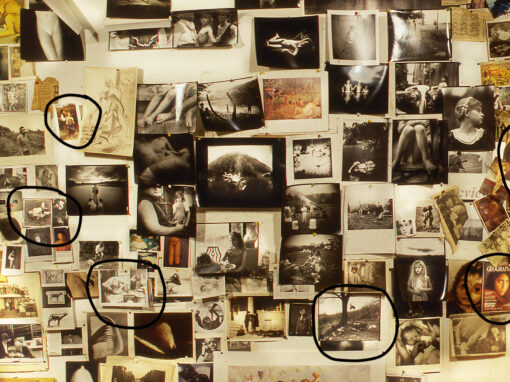Why are photographers drawn to ruins?
It does not matter if the ruin is an abandoned home, a collapsing barn, an inner-city tenement or a tree-fort. It could be the trunk of a tree, decomposing in a forest. It could be the remains of a city, buried by sand or volcanic ash. There is something alluring about decay and the very old. There is something that asks us to take a picture, to preserve the sight.
Perhaps it is our fascination with history, the allure of ghosts. Or perhaps it is our love of Story, our desire to understand the arc of a narrative. We cannot help but wonder what hands last grasped the oil lantern we find in a barn, what he may have felt upon leaving, what hope she held in secret when the barn was new.
The rusting car was once a hot rod. Who drove it? Who gave it up? Pompeii was once vibrant. We have the casts of the bodies now, and we can see their last moment. Who were they ten minutes before?
We take pictures so the questions can linger.
There is a ruin in the middle of Fargo, North Dakota, near where I live. Very few people ever see it.

On the western bank of the Red River of the North, on the inside of a bend, there is an eleven-acre complex of buildings nearly everyone calls the Fargo Foundry, though it hasn’t had that name for years. Mid-American Steel was its name when it closed.
The site began as a riverboat landing and shanty town. There was a school for a while. In the streetcar days there was a maintenance shed, which grew into the foundry, which sold itself to Mid-American Steel.

I have been living in this town for more than thirty years. Until recently, when I heard the term “foundry” I imagined the movie images of enormous pots of molten, glowing metal being poured into forms. In my imagination, the place had mystery and gravitas. It was the definition of blue-collar in the middle of a town remaking itself with boutique breweries, world-class food and front-line medicine. But, in truth, I had no idea what they did there. Someday, I thought, I would simply walk in the front door and ask for a tour.
Then it closed. The city bought the property for flood control and high-end redevelopment. Yet the buildings did not come down. Year after year, the gates remained locked and nothing changed except my own curiosity and desire to see inside. I began to plot a crime.

Yes, I decided I was going to trespass. Surreptitiously, dressed in all black, (somewhere, cool theme music playing), I was going to slip under or through some gap in the fencing and capture whatever ghosts remained. The photographic promise of ruins, the ruins of a place where men made steel, was too strong to ignore.
I called up an image of the place on Google Earth and felt stupid. There, on the back side of the building, was the driveway. I did not need to sneak in. I could drive into the middle of the place with a cup of coffee. So that’s what I did.

I went looking for a memory of steel, and if the allure of ruins is the evidence of life and work beyond our own history, beyond our vision and taste and touch, then this site was a celebration. No, I take that back. This site was a funeral wake. There were stories of past-life everywhere. There were also stories of loss and pain. There were mysteries. And there was evidence of decay.

This collection is a version of the site on one day. This is the place as it was left by the steel workers. Every tool, piece of paper, dropped glove and old rebar was a story. This is also the place as visited by people with spray paint. Sadness, pain, change, old dreams, no exit. Every building was an opportunity for wonder. Every image a hope to stop time.

The day after I was there, the buildings caught fire.

Photographer
W. Scott Olsen, Moorhead, Minnesota, USA





Dave Adams
March 30, 2021 at 23:22
They caught fire… and then what???
Desiree Day
March 31, 2021 at 00:41
Wonderful story! Thank you. I also photograph many old and abandoned places. I can relate.
Rita
March 31, 2021 at 10:15
Great read and wholeheartedly agree, I am drawn to decay like a moth to light.
michael
April 2, 2021 at 21:06
Thanks for sharing this,Scott.An amazing story.Keep up the trespassing!!
Michael
David Hopper
April 27, 2021 at 18:00
You told a good story, well. It is easy to connect to your experience and emotions. I lost everything in a forest fire and now have only memories of years of photography. Your writing has encouraged me to put some of the photos into words. Thank you.